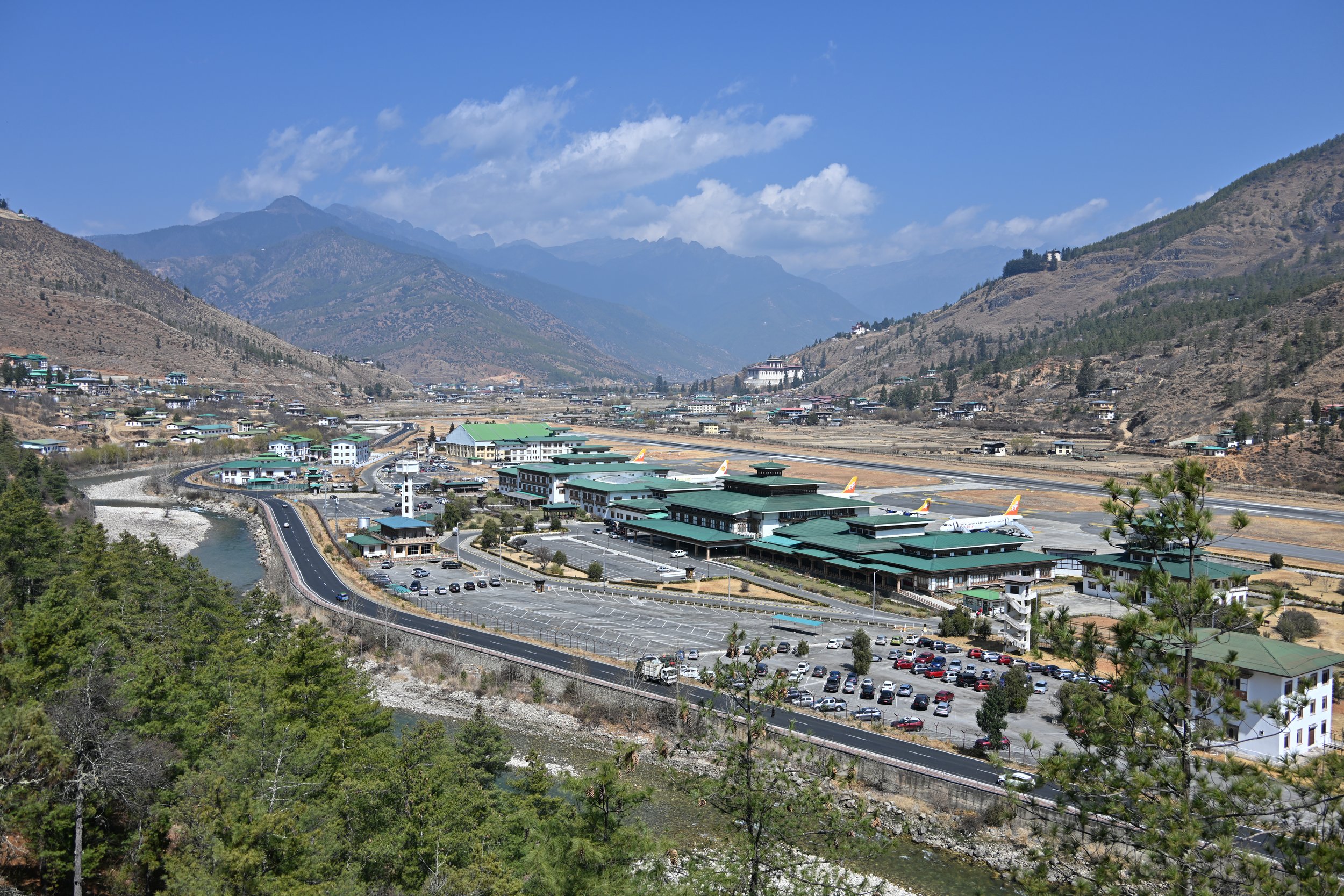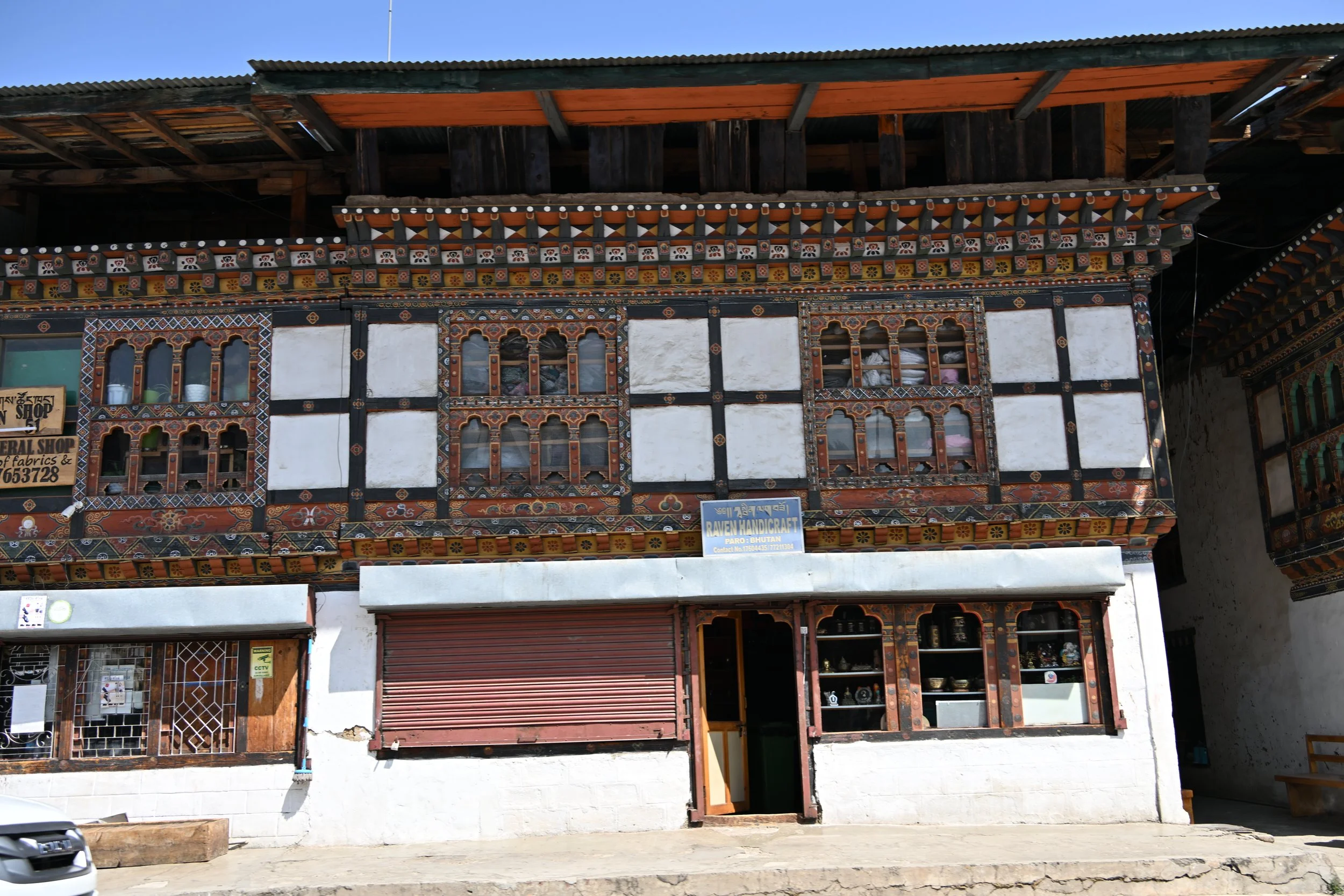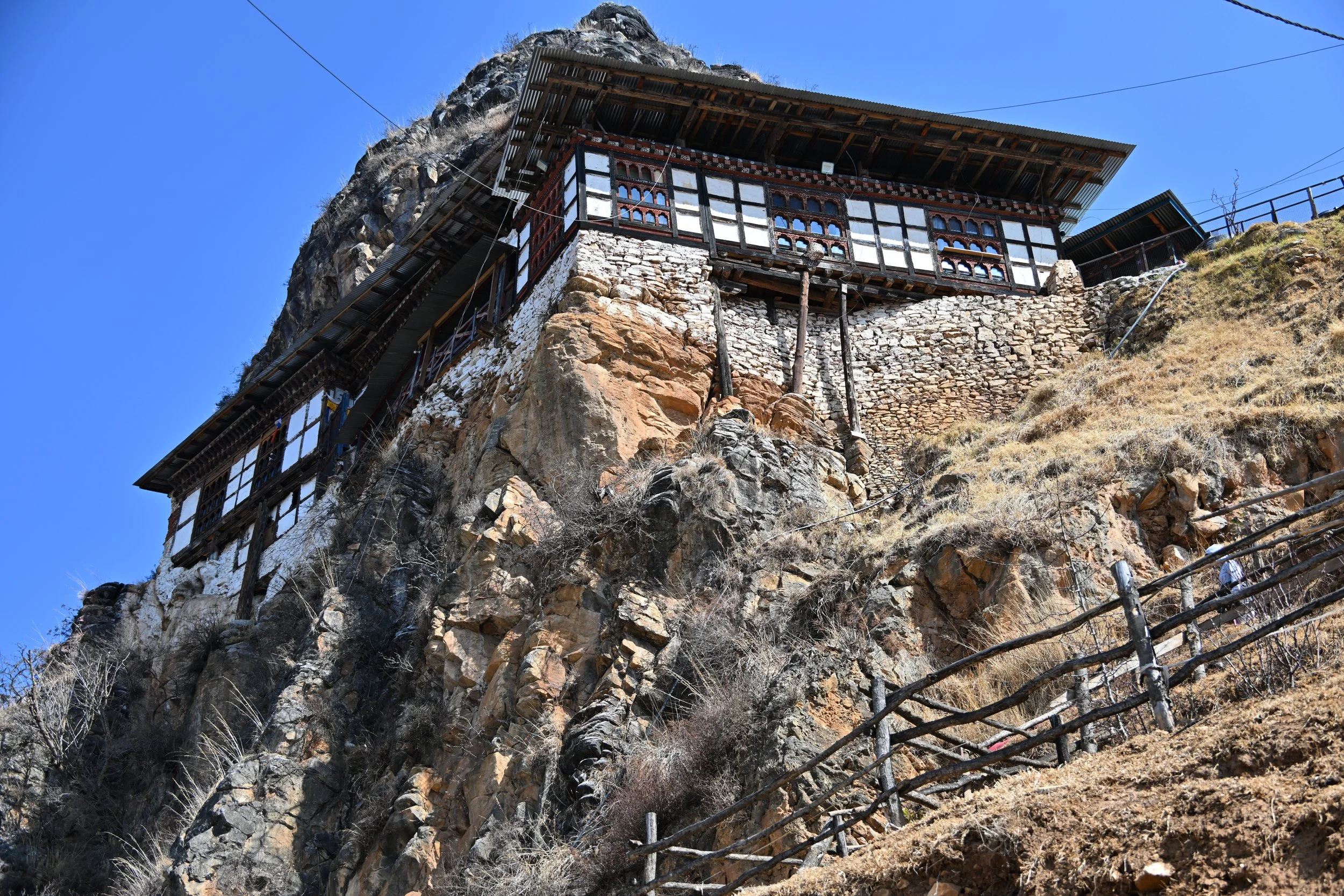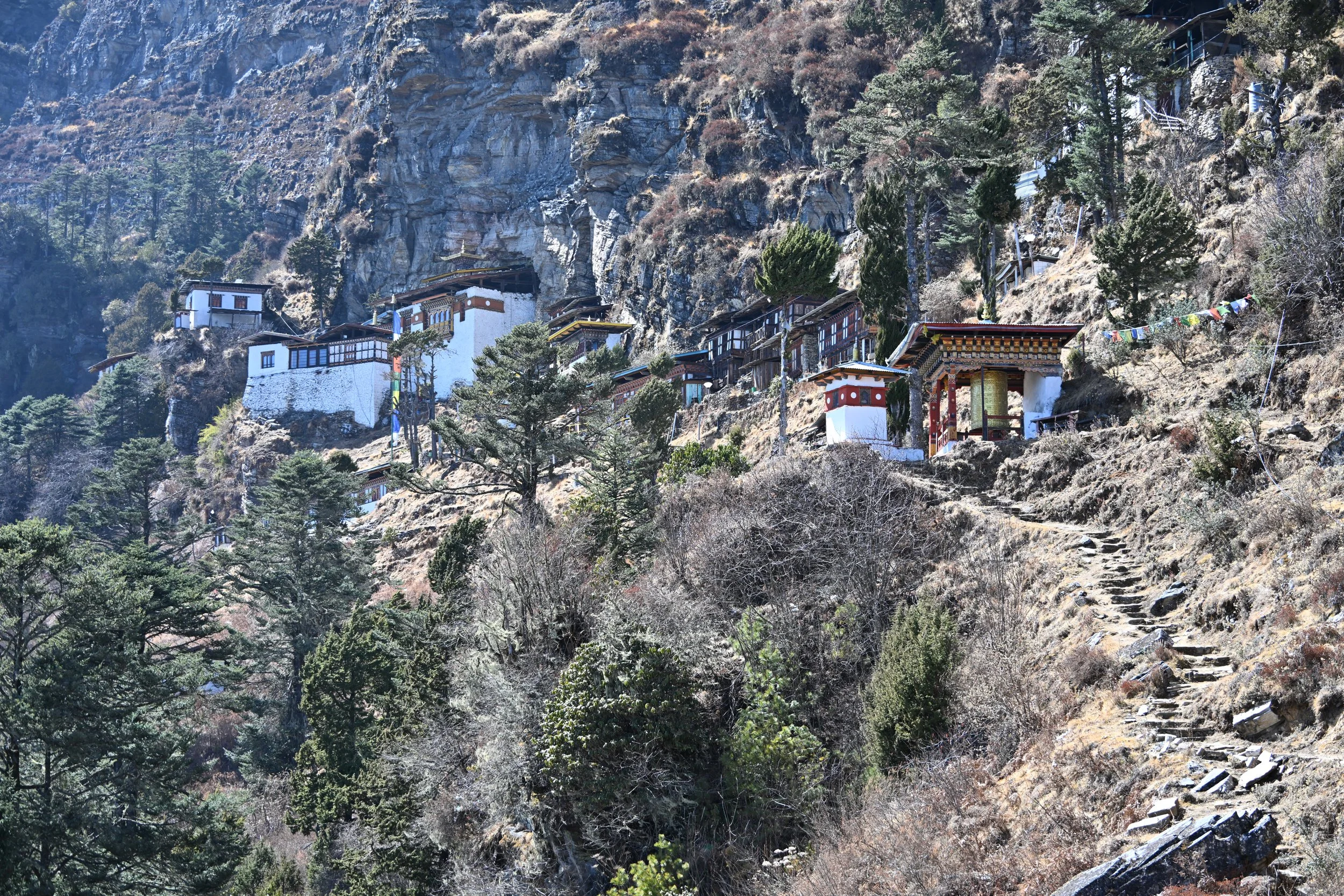Bhutan
I had seen pictures of the Tiger’s Nest (Taktsang Monastery), especially since we retired, noting that it was one of the top places in the world to ”visit before you die.”
As you know by now, when we visit a country, we like to explore it for a couple of weeks, minimum. This trip was one where I needed to use a travel agency, due to difficulties obtaining a visa, and the requirement to have a Bhutanese guide and driver when outside of the main cities of Paro and Thimpu.
I’ll start with the flight into Paro. This town (population 11,400+) in the western portion of the country has the only international airport in Bhutan. The approach to the airport is so tricky that only 50 pilots (with only two airlines) are certified to land there.
We flew from Kathmandu past the gorgeous Himalayas…
… and even got to see Mt. Everest!
(the tall, wide mountain on the left side)
I videoed the approach and landing in Paro, but it was anticlimactic because it was so smooth. Flights both into and out of this airport occur only in the morning, when the wind is calmer. It was pretty neat to see and feel the plane bank first left, then right, then left again, following the valley in as it descended.
These were the beautiful buildings greeting us as we walked into the airport –
We soon found that all buildings throughout the country have this decorative artwork. This includes homes, shops, temples and even government buildings.
We toured SO many temples and monasteries! Some were very old…
Dra Karpo Monastery built in the 8th century
…some were in the process of being refurbished…
Dzongdrakha
… and a few were nunneries –
Kila Nunnery
We learned an amazing amount about Bhutanese Buddhism from our guide, but couldn’t take pictures inside the temples. However, we spent one night at a farmhouse, which has been in the host’s family for 7 generations (the 8th are her sons), and they had a family temple as part of the farmhouse complex. I was allowed to take pictures and video, as they had a ceremony which occurs annually just before their version of Thanksgiving.
There is a whole lot going on in that picture above. The brightly colored circles are carefully painted rice cakes (which are fed to birds after about a week). There is always a Buddha statue in one of his incarnations, in the center, and flanked by numerous, smaller, different incarnations. There is a row of butter lamps behind the front row of rice circles. The walls are intricately painted with stories of Buddha, and are often the oldest thing in a temple. There are numerous colorful pennants hanging everywhere.
Next is a video (so click the link at the bottom of the post to be able to see it in your browser) that shows a musical portion of the ceremony. There are reed instruments that resemble oboes, long horns that play deep notes, cymbals and drums, as well as a very interesting instrument traditionally made out of a human femur. In the video, I try to zoom in on it, without much luck. I have a still picture of it following the video.
The next video features the leader of the ceremony (the monk on the raised chair) and others throat singing (you may need to really turn the volume up as the singing is in very deep tones) -
Now to describe typical rural or farmhouses. Doorways are often covered with a beautiful hanging…
… that you must hold aside, and carefully step over the raised threshold, as you mind your head on the low doorframe. :) The raised threshold is believed to trip up spirits of the dead who are “hanging around” on earth, causing them to fall and reminding them they are dead so they will pass on to their next life.
In older houses, there are no staircases, just steep ladders…
… and lots of drafts. The kitchen is the warmest place in the house, as there is always a wood fire heating the stove.
Well…I’ll be mooooving on now, but I’ll be back to yak, yak, yak.













